
| 
|

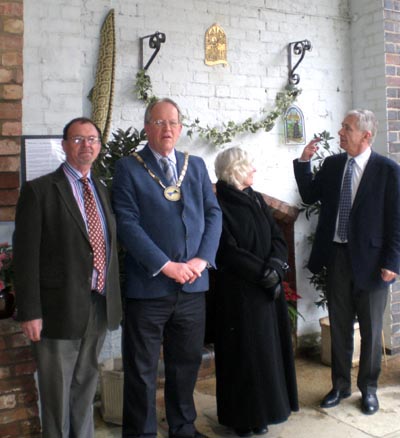
Friends Newsletter No. 51
February 2013
Friends are the water that keeps the wheel turning. We are an independent voluntary group who relentlessly promote research, conservation and celebration of the Springs, Spouts, Fountains and Holy Wells of the Malvern Hills and of Great Malvern as a Spa Town.
Malvern Water Heritage Wins Again
On a cold winter's day in February, Handel's Water Music was a suitable finale to the unveiling of the 6th St Werstan Award for the preservation of Malvern's Springs and Wells heritage. It was played by Carleton Tarr on the old Dulcitone that Blind George Pullen once played for decades up at St Ann's Well. The award was made to celebrate the imagination and effort of Adrian Ward in enhancing the Bottling Works Spring at The Courtyard on Belle Vue Terrace. The water feature was once an un-noteworthy hole in the wall but is now splendidly eye-catching. Through the elegant aperture spring water trickles down the Triassic sandstone where it abuts the harder Pre-Cambrian deposits making it a rare geological feature. 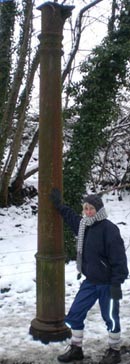

The award was made by the Friends of Malvern Springs and Wells, and the elegant brass plaque was unveiled by Jim Fox, Head of Corporate Affairs at Coca-Cola, the sponsors of the St Werstan Award scheme. He also presented Mr Ward with a stained glass window which, like the brass plaque, shows St Werstan kneeling at the foot of the Malvern Hills alongside a gushing spring. Dr Bruce Osborne, of the Friends of Malvern Springs and Wells, outlined how much research had been undertaken over the past 20 years into Malvern's unique water features, and why the St Werstan Award was initiated in 2005.
In the picture from left to right - Adrian Ward, who received the St Werstan Award, Paul Tuthill, Chairman of Malvern Hills District Council, Cora Weaver, Chairman of Malvern Museum and Jim Fox, Head of Corporate Affairs, Coca-Cola at the award ceremony. The St Werstan plaque and window can be seen above the spring on the wall behind.
Mysterious Iron Posts
A Friend wrote recently about some mysterious posts that they had noticed. "it's just off Thirlstane Rd, which runs off St Andrew's Rd (turn off on the right not far past the bakery as you're coming from the Green). You go up Thirlstane Rd, under the little railway bridge, and there's a gate on the left that you go through on to the common. The post is just near the gate. There's a few others around but can't remember exactly where they are. Hope that helps!"
We found the post one snowy day in January and noted that it was old - likely Victorian, was made of iron and had the remains of a Corinthian column top. Our best guess was that it was a vent for the trackside main that runs alongside the railway. This six inch pipe supplies Railway Tunnel Spring water to Malvern and Malvern Link stations.
Have a look and see if you can identify what it is. And where are the others?
Picture: Cora checks the column for stability.
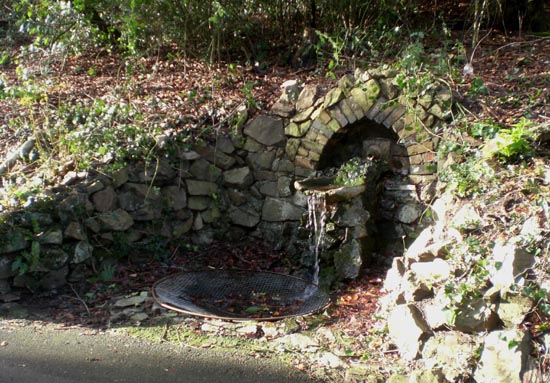
Lodge Fountain enjoys a facelift.
The Lodge Spring has recently benefited from a facelift. It is noted for its association with famous people in the 19th century, including such notables as Charles Darwin. For many years this fountain was forgotten beneath undergrowth, just off the Worcester Road to the north of Malvern Town. We first rediscovered it in the 1990s and slowly it was cleared of vegetation and the water flow established. As a result of the very wet weather earlier this year it is flowing extremely well and now that surrounding trees and vegetation are cleared it can be seen to be a significant water feature.
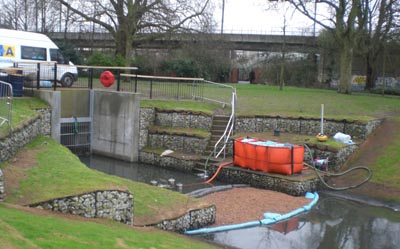 It is well worth a look when you are out and about. Walk from Malvern town towards Malvern Link past the end of the shops. It is just up the drive on the left to Hill House near the radio mast.
It is well worth a look when you are out and about. Walk from Malvern town towards Malvern Link past the end of the shops. It is just up the drive on the left to Hill House near the radio mast.Water Features and Fountains Elsewhere - the River Wandle
The River Wandle runs from Croydon, south of London, to the River Thames at Wandsworth. Historically it is one of the most industrialised and polluted rivers in England. It is fed by springs in the Croydon area with spring water emerging from the chalk of the North Downs. Twentieth century development meant that much of the route was lost where the river and surface features had been replaced with industrial estates, new roads and high density housing. 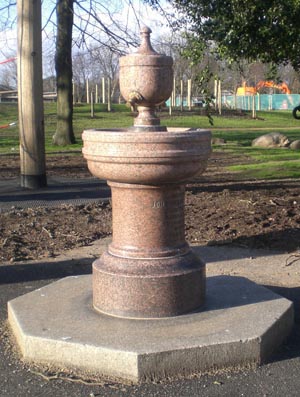 In recent decades, much greater environmental awareness has resulted in a strong movement supporting the restoration of the river as a public amenity. The pollution has largely been cleared; fish now swim where industrial effluent once ran. People walk where once they dumped litter, and parks now entertain families where once they were habitat for stinging nettles.
In recent decades, much greater environmental awareness has resulted in a strong movement supporting the restoration of the river as a public amenity. The pollution has largely been cleared; fish now swim where industrial effluent once ran. People walk where once they dumped litter, and parks now entertain families where once they were habitat for stinging nettles.
 In recent decades, much greater environmental awareness has resulted in a strong movement supporting the restoration of the river as a public amenity. The pollution has largely been cleared; fish now swim where industrial effluent once ran. People walk where once they dumped litter, and parks now entertain families where once they were habitat for stinging nettles.
In recent decades, much greater environmental awareness has resulted in a strong movement supporting the restoration of the river as a public amenity. The pollution has largely been cleared; fish now swim where industrial effluent once ran. People walk where once they dumped litter, and parks now entertain families where once they were habitat for stinging nettles. As a result of the degrading of this natural resource Croydon old town lost much of its surface water features. Wandle Park, where once people took pleasure boats on the ponds became a barren, characterless space. Today the situation is changing. Croydon Council is breaking the river out of its culvert and reinstating it on the alignment shown on mid 19th century maps. In addition they are restoring the river side walk that existed when Wandle Park first opened to the public in 1890. This is part of a longer term strategy to reinstate surface water in Croydon old town as well as provide a quality leisure environment within the park itself. Croydon last received publicity with the burning and looting of Croydon old town during the 2011 riots. It makes you realise how lucky Malvern is with its Priory Park, fed by local spring water, but how about getting paddle boats back on Swan Pool?
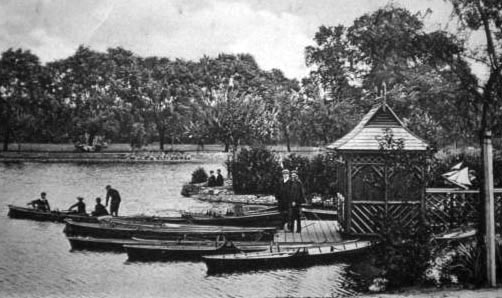
Pictures:
1. Cleaning up the river resulting from an oil contamination at the new exit for the previously culverted river into Wandle Park.
2. The restored fountain originally presented by the Mayor of Croydon to commemorate the opening of Wandle Park in May 1890.
3. Boating in Wandle Park circa 1900.
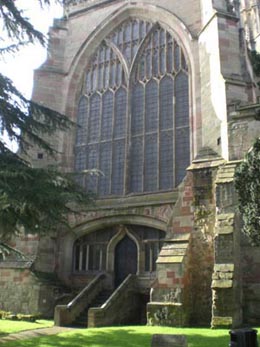 St Werstan - new evidence?
St Werstan - new evidence?An interesting article appeared in the Malvern Museum Newsletter 'Newseum' in January. Written by Paul Backhouse, it details 12th century snippets about Malvern Priory. Of particular interest to springs and wells enthusiasts is the possibility of archaeological evidence endorsing the presence of St Werstan a full 250 years before the famous windows in the Priory picture his legend. St Werstan has always been a mystery and following the research and publication of 'The Illumination of St Werstan the Martyr' in 2006 by Cora and Bruce, it was generally felt that sufficient evidence survived to endorse his legend and he was adopted as patron saint of springs and wells. Now Paul identifies the crypt beneath the Lady Chapel, exposed at the bottom of the exterior wall at the eastern end of the Priory. He then cites Prof. Mike Aston when writing in British Archaeology (Sept/Oct 2012), "A probably legendary foundation by a St Werstan may explain the remains of a crypt: such structures often housed the relics of local saints." If Prof. Aston is correct then the ruined crypt may indeed provide new evidence for the existence of St Werstan as early as the late twelfth century. Well done Paul for spotting this and lets organise an exploration!
Picture - The eastern end of Malvern Priory where the exposed crypt can be seen.
Spas Elsewhere - Shanklin, Isle of Wight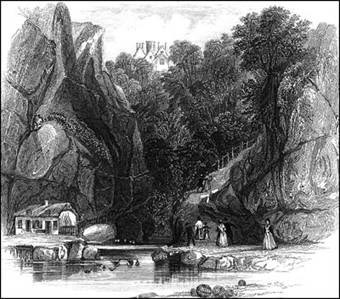

It is interesting to compare the history of other English spas with that of Malvern. Similarities suggest that evolution was on common lines and often clues to gaps in one spa's history can be gleaned from the similar time period elsewhere. A limited edition new publication in 2012 has highlighted such similarities in the case of Shanklin. The health giving qualities of the Shanklin chalybeate spring were first identified by a Dr James Fraser, physician to Charles II. This is contemporary with the recorded 17th century use of Malvern waters at the Holy Well. Great Malvern also had an early chalybeate spring. It was not until the Royal patronage of Queen Victoria at Osborne on the Isle of Wight from 1845 however that the Shanklin resort started to boom. The earlier visit of the then Princess Victoria to Malvern did much for the town’s tourism and spa industry. The presence of the railway to Shanklin after 1864 also did much to encourage tourism; likewise Malvern enjoyed the railway from 1861. Shanklin's spa benefits however relied largely on sea water bathing and coastal holiday health whereas Malvern relied on its waters coming from the hills. For more details of Shanklin see The Royal Spa (2012) by Ord-Hume A W J.
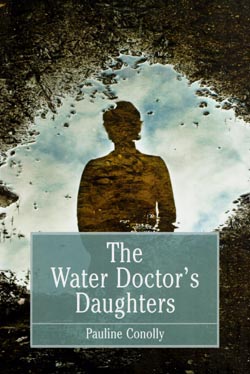
Picture: The chalybeate waters issue from the base of the sea shore cliffs below Shanklin Chine as seen in this mid 19th century view.
BOOK LAUNCH at The Foley Arms Hotel Malvern on Saturday 23rd March - 2pm
Hosted by the Malvern Book Co-operative - Author Introduction Talk & Book Signing.
A true story of injustice, ignorance, and misguided religious zeal. In 1852, Great Malvern water-cure practitioner Dr James Loftus Marsden sent his five daughters to Paris with their governess, Mlle. Doudet. Two girls died and Doudet stood trial for manslaughter and cruelty. But who was more culpable; the governess or the autocratic, blindly ambitious Dr Marsden? And what became of the surviving siblings? Twenty years later another suspicious death occurred!
Published by Robert Hale Ltd, London.
Contact: www.paulineconolly.com
UK publication date 28th February 2013. ISBN 9780719805707. Price £18.99. Format 234 x 156 mm h/b. Extent 280 pp. Illustrations; Approx. 30.
Contact: www.paulineconolly.com
UK publication date 28th February 2013. ISBN 9780719805707. Price £18.99. Format 234 x 156 mm h/b. Extent 280 pp. Illustrations; Approx. 30.
Another Mystery to ponder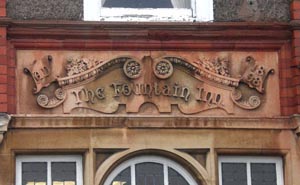

The Court Road Spout at the junction of Woodshears Road and Court Road is near a building, now a shop, which bears the plaque in the picture. The plaque reads The Fountain Inn AD 1898. The question is where is the fountain? Was there a separate fountain in the grounds of this former Inn or was the plaque a reference to Court Road Spout. Send us your thoughts.
Email: springs@thespas.co.uk (click here to send an email)
Website: Click Here
SUPPLEMENTARY INFORMATION
The home page can be accessed by clicking website above.
Contact Information:
Friends main website - www.MalvernWaters.com
 Newsletter Archive which can also be accessed from our WEB SITE INDEX.
Newsletter Archive which can also be accessed from our WEB SITE INDEX.
Friendship - There is no charge made for joining Friends of Malvern Springs and Wells. Just let us have your email address and we will send our newsletters, which are usually two monthly. Please be aware that some email addresses block large circulation emails. Do feel free to participate in our activities by contacting us below.
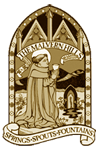
Best wishes, Cora & Bruce
Bruce Osborne, Tower House, Tadworth, Surrey. KT20 5QY
Tel. 01737 213169 email bruce@thespas.co.uk
Tel. 01737 213169 email bruce@thespas.co.uk
Cora Weaver, 4 Hall Green, Malvern, Worcs. WR14 3QX
Tel. 01684 561215 email cora@malvernspa.com
Tel. 01684 561215 email cora@malvernspa.com
1) TOPOGRAPHICAL LOCATION:
Malvern Hills - arguably Britain's original National Park
3) INFORMATION CATEGORY:
Springs and Wells General InterestHistory & Heritage
Friends Newsletter


